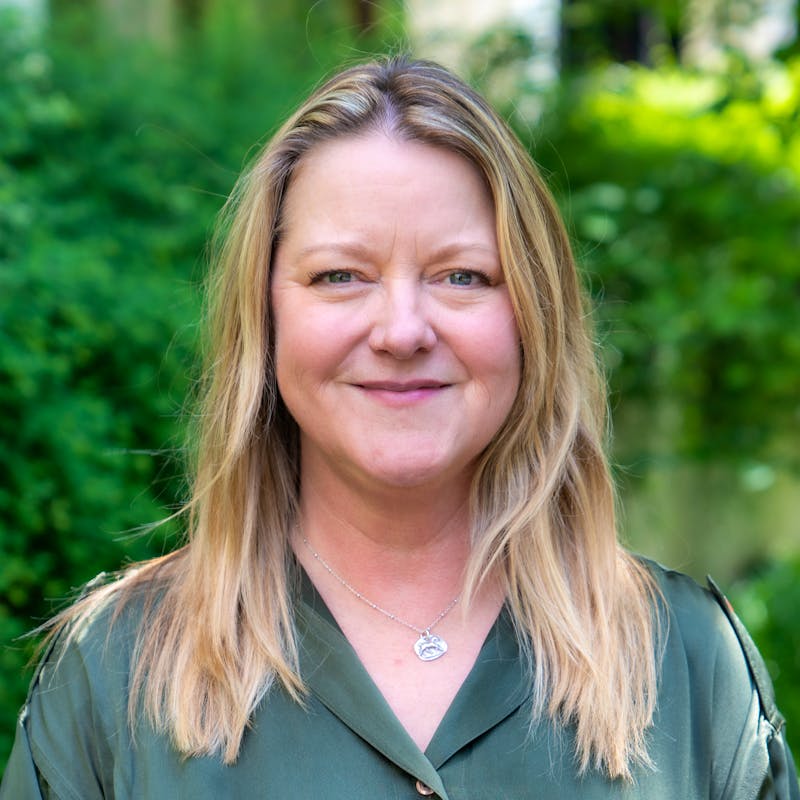The marshy ground sank with each step under my waterproof boots as I kept a keen eye out for an elusive and tiny creature often found on the meadow’s edge. It didn’t take me long to scoop up what I was looking for: one of the most endangered amphibians in North America, the Wyoming toad!
Sometimes my fieldwork takes me away from the hot, dry prairie grasslands to a world of vibrant marshy wetlands, adorned with grasses of every height and dotted with large lakes as far as the eye can see. As a surveyor, I had the opportunity to trap and capture these small toads in my hands during a survey at the Mortenson Lake National Wildlife Refuge, managed by the U.S. Fish and Wildlife Service. Wyoming toads were once believed to be extinct, but thanks to state and federal wildlife agencies and private landowner and nonprofit partners, they are recovering. The refuge we surveyed, and nearby private wetlands, are the only places this endangered species inhabits today. In fact, the refuge is so important to the recovery of this species it is currently closed to the public to prevent any unintentional harm to the toads.
A Leap Through History
The Wyoming toad is an endemic species, meaning it is only found in the Laramie Basin in southern Wyoming. At one time they were common and occupied most of the floodplains, ponds and lakes in this area. However, by the mid-1970s changes in hydrology, insecticides, disease and climate change combined to make it difficult for the species to survive. And in 1985, the species was believed to be extinct.
Two years later, a small population was rediscovered. By 1994, the numbers of that population dwindled and the decision was made to bring the last remaining toads into captivity.
In 2001, FWS appointed the Wyoming Game and Fish Department to the Wyoming Toad Recovery Team. The team includes representatives from the University of Wyoming, Association of Zoos and Aquariums, Laramie Rivers Conservation District, Wyoming Natural Diversity Database, private landowners and ranchers, FWS Wyoming Field Office, Arapaho National Wildlife Refuge in Colorado, — which administers Mortenson Lake NWR — and National Fish Hatchery System, among others.
On the Road to Recovery
Like the black-footed ferret, the Wyoming toad’s captive breeding program has been crucial to its recovery. Over the last decade, hundreds of Wyoming toads were bred in captivity and released into their native habitat, in Laramie-area wetlands. Each toad receives a tiny tracking device to help biologists monitor them and track their survival. Like other reintroductions, partners and lessons learned drive the program.
The program started out by releasing tadpoles, but biologists found up to 95% of these animals were not making it to adulthood. Released adult toads, on the other hand, had better success in following years. Wyoming toads typically take two to four years to reach breeding size, but some of the 1-year-old toads released can breed sooner thanks to their controlled environment and consistent food supply when reared in captivity. Although many facilities contribute to the captive breeding effort, only two currently have the space needed to captive-rear toads so they can be released as 1-year-olds: the Saratoga National Fish Hatchery in Saratoga, Wyoming, and Cheyenne Mountain Zoo in Colorado Springs, Colorado.
There are four main reintroduction sites. One is the Mortensen Lake NWR, on FWS lands dedicated to recovering the Wyoming toads. Mortensen Lake was owned by Charlie Swanson, who sold the land to the Nature Conservancy to protect the toad. This then led to the establishment of the Refuge in 1993.
The other three release sites are privately owned and have Safe Harbor Agreements, which allow the recovery teams to release federally protected species on private land. Wyoming toads are currently released on property owned by Fred and Stephanie Lindzey, the City of Laramie and Go Beyond, formally known as the Buford Foundation.
The wild population of Wyoming toads is not yet self-sustaining but progress is being made. In 2019, 52 adults, 10 yearlings and several younger toads and tadpoles were reported across all four release sites. There is also evidence of the toads breeding in the wild.
Lending a Helping Hand
For the annual toad survey on the Refuge, I walked through the marshes along the shore, scanning the ground for any movement. The small toads are actually pretty easy to spot and catch. Once I had one in my gloved hands, I collected my samples. A swab over the toad’s body, along with measurements and photos for a database compiled to document populations and to determine the success of the recovery program.
Fieldwork involves many volunteers putting in long days to cover all the wetlands under this program. Our goal is to survey as many toads as possible for the data and analysis. And it’s a worthy cause, knowing we are helping to recover even the smallest of species, and this one cute amphibian, the Wyoming toad.









